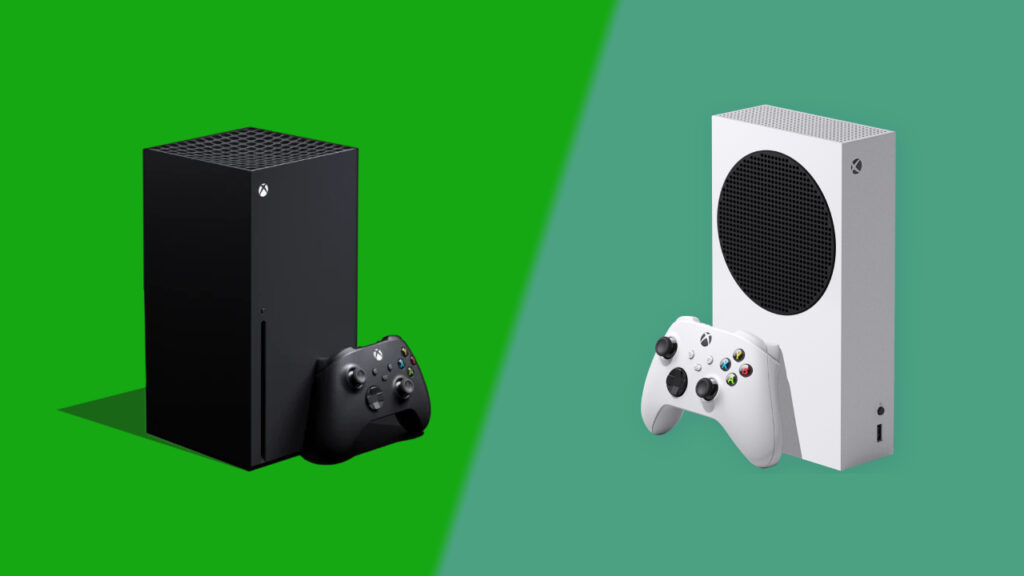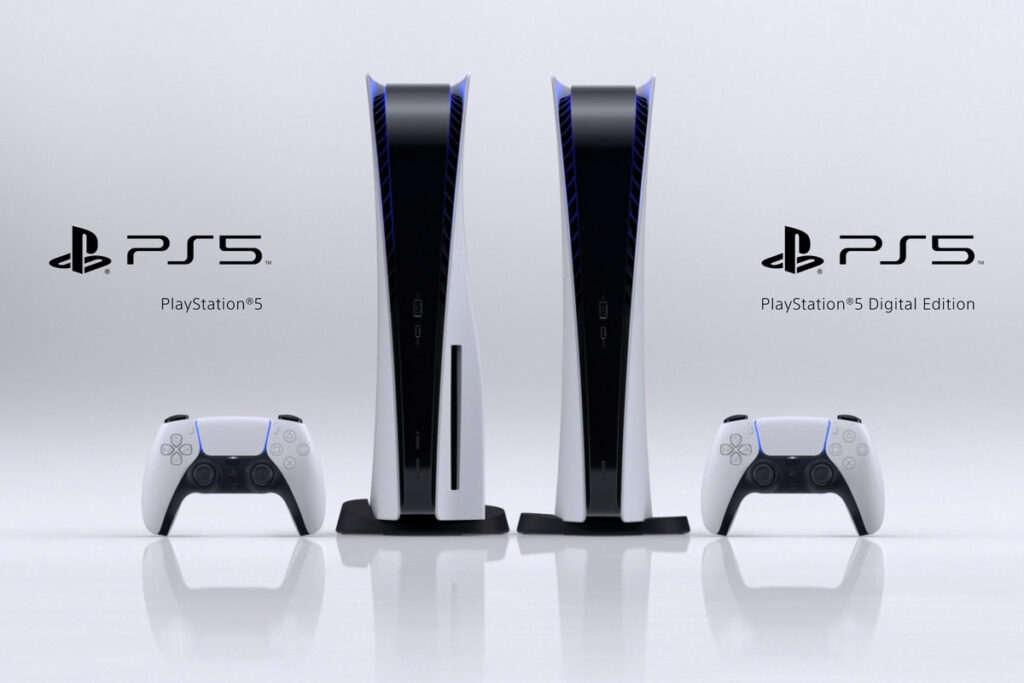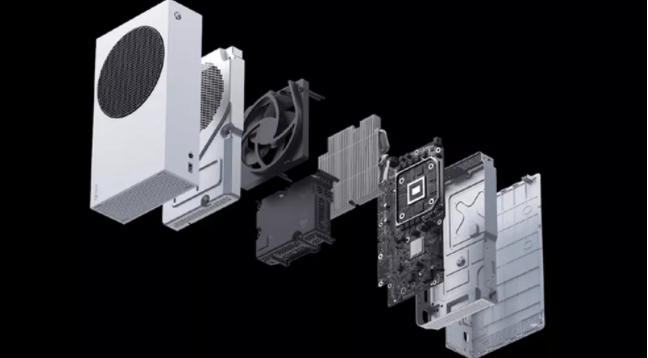The release of the PlayStation 5 (PS5)’s price last Wednesday (16), as well as the confirmation of the Xbox Series S and Xbox Series X values last Monday (21), allows a comprehensive comparison between the three consoles of the new generation.
Similar in some respects, such as processor and memory, Sony and Microsoft video games also have significant differences in price, graphics performance, and features such as Wi-Fi 6 (802.11ax) and USB-C ports that appear only on the new PlayStation. Below, check out the comparison of the technical sheet and prices of the trio arriving in November.
PlayStation 5 vs Xbox Series X vs Xbox Series S
| PS5 | Series X | Series S | |
|---|---|---|---|
| Launch | November 19 | November 10 | November 10 |
| Price | $399 or $499 | $499 | $299 |
| CPU | AMD Zen2 octa-core up to 3.5 GHz | AMD Zen2 octa-core up to 3.8 GHz | AMD Zen2 octa-core up to 3.6 GHz |
| GPU | AMD Radeon 36 UCs at 2.23 GHz | AMD Radeon 52 UCs at 1.825 GHz | AMD Radeon 20 UCs at 1.56 GHz |
| Computational performance | 10.29 TFLOPS | 12 TFLOPS | 4 TFLOPS |
| Storage | 825 GB SSD, up to 9 GB/s read | 1 TB SSD, up to 4.8 GB/s read | 512 GB SSD, up to 4.8 GB/s read |
| RAM | 16 GB GDDR6 @ 448GB/s | 16 GB GDDR6 (10GB to 560 GB/s and 6 GB to 336GB/s) | 10GB GDDR6 (8GB to 224GB/s and 2GB to 56GB/s) |
| Disc player | Versions with or without Blu-Ray UHD player | UHD Blu-Ray drive | Doesn’t have |
| Ports and interfaces | 2x USB Type-A, 2x USB-C, HDMI 2.1, Gigabit Ethernet, Bluetooth 5.1, and Wi-Fi 6 | 3x USB Type-A, HDMI 2.1, Gigabit Ethernet, Xbox Radio and Wi-Fi 5 | 3x USB Type-A, HDMI 2.1, Gigabit Ethernet, Xbox Radio and Wi-Fi 5 |
| Dimensions and weight | 39 x 10.4 x 26 cm; 3.9 or 4.5 kilos | 15.1 x 15.1 x 30.1 cm; 4.45 kg | 15.1 × 6.5 × 27.5 cm; 1.93 kg |
Design

The three consoles differ greatly in size and style. Series S is compact and weighs 1.93 kg – Microsoft says the input model is 60% smaller than Series X – and brings lines and finish that refer to the Xbox One S style: white, with black details.
The Xbox Series X has a parallelepiped format. With a dark color that resembles the One X, the Series X weighs 4.45 kilos. Like the smaller and cheaper brother, Microsoft’s top-of-the-line can be used both vertically and horizontally.

The PlayStation 5 has a two-tone design, with a more prominent contrast between white and black, reinforced by an LED that highlights the contours of the console. More eye-catching than its rivals, the PS5 is larger and weighs 3.9 kilos (in the Digital version) and 4.5 kilos in the option equipped with a disc player.
Processor
The three consoles use CPUs created by AMD with the same Zen2 architecture and with very similar specifications. This indicates that the performance of the consoles in tasks that are sensitive to processor performance – aspects of in-game simulation and processing of artificial intelligence routines of hosts are examples – should match all three.
In the numbers, who takes advantage is Microsoft’s Xbox Series X? The console features an eight-core processor that offers 16 threads (execution lines). This total means that, in practice, the processor chosen by Microsoft can perform as if it has 16 cores, performing 16 tasks at the same time.
In terms of speeds, the X Series octa-core can run at up to 3.8 GHz, using the eight physical cores, or reach 3.6 GHz with the 16 execution threads activated. The S Series features a CPU with the same profile: 16-threaded octa-core, which guarantees slightly lower speeds: 3.6 GHz with eight cores and 3.4 GHz with the 16 threads.
Between the two Microsoft models, it’s possible to fit PlayStation 5. The Sony machine uses a 16-core octa-core processor that works at speeds up to 3.5 GHz. Unlike the new Xbox, which guarantees fixed speeds, the PS5 can vary this speed down in situations where the processor is not in high demand.
Video Card (GPU)

Just like the processor, the video card (or graphics processor) of the three consoles has the same origin: it is a Radeon from AMD, the fruit of the RDNA2 architecture, customized by the manufacturers to meet their needs. This means the presence of state-of-the-art technologies, such as Ray Tracing effect acceleration, more advanced image reconstruction techniques, etc. As with processors, the most powerful component is within the X Series.
Microsoft’s high-end graphics processor has 52 computational units. In a simplified way, you can understand these computational units as the number of processing cores of the GPU. In other words: the more, the better, since it gives the system the ability to face heavier work and handle a higher processing volume per unit of time.
In addition to the 52 cores, the Xbox Series X GPU promises to run at a fixed speed of 1.825 GHz. The result of the combination of total cores and this speed is that the Microsoft console guarantees a raw computing performance of 12 TFLOPS.
The middleman in this fight is PS5. The Sony product has a graphics card that adds up to 36 computing units, capable of running at a maximum speed of 2.23 GHz. As Sony’s console, unlike Xbox, can vary this speed down when the card is not subjected to a high workload, it is possible to say that the raw computing performance of the PS5 graphics can reach 10.29 TFLOPS in the best-case scenario.
Finally, the S Series comes with a smaller and simpler graphics card. There are 20 computational units configured to operate at a speed of 1.565 GHz, enough for a maximum performance estimated at 4 TFLOPS.
TFLOPS, or teraflops, is a measure of raw processing capacity that measures the number of trillions of mathematical operations using comma numbers that a given processor can perform. That is, 12 TFLOPS means that the X Series can calculate 12 trillion operations using broken numbers per second.
It is not an indication of how each console will perform in games, it only indicates its raw processing capacity.
Memory
In terms of RAM, Microsoft has created a slightly different design. Both Series S and Series X have two types of memory in different sizes and speeds.
On the input console, the total is 10 GB of GDDR6. Of these 10 GB, 2 GB are low speed and exchange data with the processor at a maximum speed of 56 GB/s (gigabytes per second). The remaining 8 GB operate at higher speeds of 224 GB/s
The X Series has a total of 16 GB, but also divided. There are 6 GB of low-speed GDDR6 – up to 336 GB/s – and another 10 GB of 560 GB/s. It’s up to the developers to consider the use of memory to ensure that the files and resources needed to run the games are read in time.
On Sony’s side, the design is more conventional because total memory always operates at the same speed. On the PS5, there are 16 GB of GDDR6 capable of exchanging 448 GB/s of data with the processor and graphics card of the console.
This relationship of data exchange between the two components is essential in games because, in general, it is in memory that textures, graphic elements, 3D models (such as characters and objects on stage) are left before being rendered on your screen. RAM stores everything the game may need within the next few seconds of action. That’s why, the greater the capacity and speed of memory transfer, the greater the system’s resourcefulness when it comes to playing a game in a high resolution to a stable performance.
Storage

One of the great features of the new generation of consoles is the offer of high-speed embedded SSDs. Disks of this type are much faster than conventional HDDs used in today’s consoles because they organize, write, and read information stored completely electronically. In a conventional hard disk (HD), this reading takes place in an electromechanical way, at speeds that are more than 100 times slower.
In this respect, the advantage is all Sony. The PS5 comes from the factory with a fully customized SSD of 825 GB of maximum capacity. This drive can read data at 5.5 GB/speed in raw format, or up to 9 GB/speed using advanced data compression techniques supported by Sony.
It’s such a high speed that there’s nothing on the PC market that can rival Sony’s console at the moment. Another possible comparison is with the current generation: a hard disk on PS4 and Xbox One hardly allows reading at speeds of 100 MB/s.
Besides the factory SSD, the Sony console will have an NVMe slot, the same one found on PCs, for installing extra SSD as a way to increase capacity. The mark warns, however, that only SSDs certified by Sony will be compatible with PS5.
On Microsoft’s side, the technology is similar, but the performance is a bit lower. Both models of Xbox promise SSDs of 2.4 GB/s speed for reading raw data, or 4.8 GB/s using compression techniques. The only difference between Series S and Series X on the factory solid disk is the capacity. Series S has 512GB SSD, while the more expensive model comes with a 1 TB disk.
Like Sony, Microsoft will allow the installation of extra SSD. In Microsoft’s case, the format of the accessory will be proprietary and reminds a memory card.
Resources
The new information about the consoles confirmed some extra details between them. One of the most striking is that the PS5 will support Wi-Fi 6 (802.11ax) and Bluetooth 5.1, while the two Xbox models still only offer Wi-Fi 5 (802.11ac) and do not support Bluetooth connections (in contrast, Microsoft offers its technology to connect wireless controls and accessories to the console).
Another unusual difference in the interfaces between rival platforms is the presence of USB-C on the Sony console, but not on Xbox. While the PS5 has two USB Type-A (one of the 10 Gb/s SuperSpeed) and two USB-C (both 10 Gb/s SuperSpeed), Microsoft’s console adds three USBs in 5 Gb/s Type A format.
Another highlight is that only Xbox has support for Dolby Atmos, for movie sound, and Dolby Vision, a competing format to HDR. Moreover, on both platforms (considering the three models), the consumer finds HDMI 2.1, which allows video transmission up to 8K.
Games Library

The new Xbox promises a more varied menu. Taking advantage of the older generation compatibility program started on Xbox One, the new Series S and Series X will run all the Xbox and Xbox 360 games that are already part of the initiative. Also, the two consoles promise to run all Xbox One games normally.
On Sony’s side, the PS5 will have a smaller library. The console debuts on the market with the promise of 99% compatibility with the PS4 catalog, and of course will have access to new generation releases.
There is no information on compatibility with PlayStation, PS2, and PS3 games so far.
Price and Availability
Sony has already confirmed PS5 prices. PlayStation 5 comes out here from $399 for the unit without a Blu-Ray disc player. Those who prefer the drive for Blu-ray UHD discs need to pay $499 for the console.
The Xbox Series X arrives for $399, while the more modest model Xbox Series S comes out for $299.
This post may contain affiliate links, which means that I may receive a commission if you make a purchase using these links. As an Amazon Associate, I earn from qualifying purchases.

